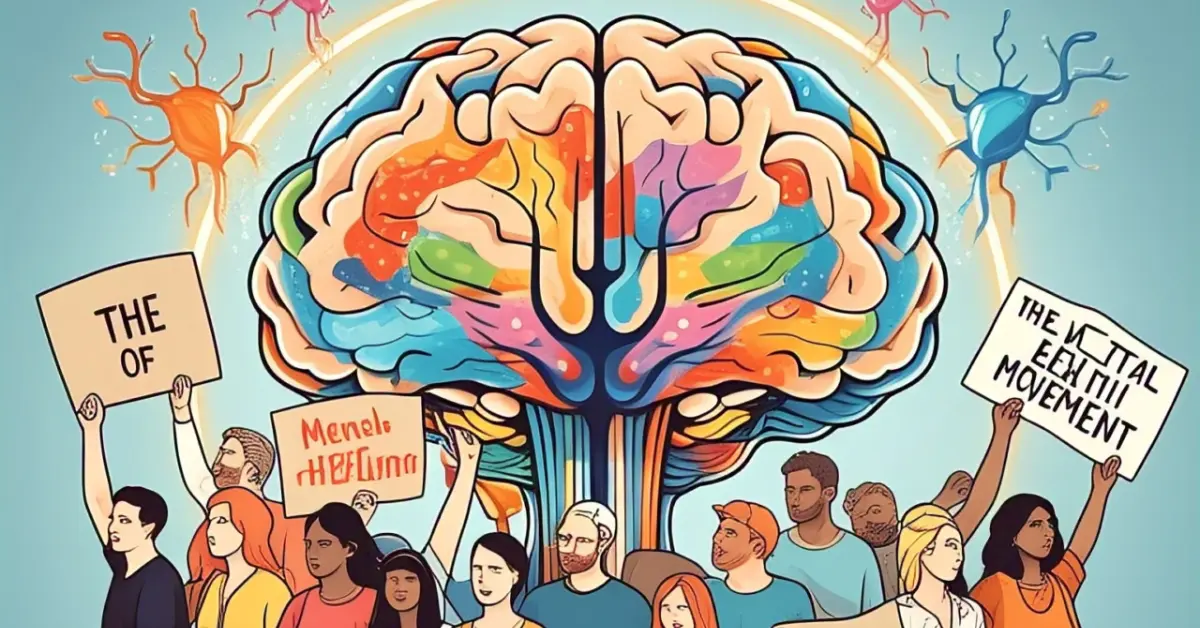Most aspiring creators struggle with how to effectively produce and distribute content in today’s fast-paced digital landscape. This blog post will guide you through vital strategies to enhance your writing, photography, and sharing techniques, empowering you to connect with your audience on multiple platforms. By mastering these skills, you can elevate your digital presence, engage viewers, and build a personal brand that resonates. Whether you’re a seasoned creator or just starting out, these insights will help you navigate the ever-evolving world of content creation with confidence.
Understanding Content Creation
Your journey into content creation begins with a clear understanding of its foundations. Today, being a content creator is not just about bypassing traditional media and stepping into digital platforms; it’s about wielding the power of storytelling, multimedia, and audience connection. It involves strategic thinking, creativity, and the ability to adapt to ever-changing digital landscapes.
The Evolution of Content Creation
Among the early forms of content creation, print media dominated, providing a static way to share information and stories. With the advent of the internet, content creation morphed into a dynamic practice, enabling anyone with an internet connection to publish their thoughts and ideas. The rise of social media platforms broadened this concept further, allowing for real-time engagement and interaction with audiences worldwide.
This transformation has led to an explosion of formats as well – from blogs and podcasts to videos and infographics. The landscape of content creation is now multifaceted, where innovation is continuous, and the tools at your disposal are constantly evolving. Understanding this evolution is important for you as a content creator to stay relevant and effective in your endeavors.
Importance of Content in the Digital Age
Above all, the importance of content in today’s digital age cannot be overstated. It acts as a bridge between you and your audience, fostering trust, communication, and relationship building. Quality content serves not only to inform but also to engage, entertain, and inspire action. In a world inundated with information, standing out requires a strong content strategy that aligns with your brand’s mission and resonates with your audience’s needs and interests.
For instance, think about how you consume information online. Whether it’s a social media post, a blog article, or a video tutorial, the content you encounter informs your opinions and shapes your choices. Engaging content is instrumental in driving traffic to websites, enhancing brand loyalty, and generating sales leads. Hence, creating meaningful content is fundamental to your success.
Types of Digital Content
After establishing the significance of content, it is vital to explore the various types of digital content you can create. Below is a breakdown showcasing different forms of digital content:
| Type of Content | Description |
| Blog Posts | In-depth articles on specific topics that can provide value and establish authority. |
| Videos | Dynamic visual content that can capture attention and convey messages effectively. |
| Infographics | Visual representations of information designed to make complex data more digestible. |
| Podcasts | Audio content that allows for storytelling, interviews, and discussions on various subjects. |
| Social Media Posts | Short-form content designed for engagement and interaction on platforms like Instagram or Twitter. |
Due to the diversified content forms available today, you need to choose the types that resonate most with your audience and align with your brand. Each content type has its unique characteristics and best-use cases, making it important to tailor your approach accordingly.
For instance, while videos might be perfect for storytelling, blog posts can be more suitable for deep dives into complex topics. Here’s a summary of more types of digital content you should consider:
- eBooks – Extended written content providing valuable insights on specific themes.
- Webinars – Interactive video sessions that educate and engage an audience on particular subjects.
- Case Studies – In-depth analyses demonstrating the success of a project or service.
- Email Newsletters – Regular communications that keep your audience informed and engaged.
- Online Courses – Educational programs designed to teach skills or knowledge through structured content.
Recognizing the strengths of each type will enable you to deploy the right mix of content, ensuring your engagement strategies are effective and your storytelling is impactful.
The Writing Process
One of the most significant aspects of content creation is the writing process, which serves as the backbone for any successful piece. This process involves several key steps that help to transform your ideas into well-crafted content that resonates with your audience. To lay the groundwork for your writing journey, you should prioritize research and ideation techniques that align with your goals and target audience.
Research and Ideation Techniques
Before you start crafting your content, it’s important to gather information and insights that will inform your writing. Begin by identifying trending topics within your niche and exploring what your audience is actively seeking. Utilize tools like Google Trends, social media listening platforms, and keyword research tools to uncover what resonates with your readers. Engaging with your audience through surveys or online forums can also yield valuable ideas that enhance your content’s relevance.
Additionally, brainstorming techniques such as mind mapping or free writing can stimulate your creativity and generate a plethora of ideas. Once you’ve compiled a robust collection of research and potential topics, narrow it down to those that align best with your message and objectives. This focus will serve as a solid foundation for your writing and ensure that your content remains aligned with your audience’s interests.
Crafting Compelling Headlines
Below the surface of your content lies the headline – a decisive element that can either draw readers in or push them away. Crafting compelling headlines involves striking a balance between clarity and intrigue, ensuring that your readers are not only informed about the content but also curious enough to explore further. Aim to use strong action verbs, quantifiable data, and emotional triggers to make your headlines pop.
Indeed, headlines are often the first impression you make, so it’s wise to dedicate time to perfecting them. You may experiment with different styles, such as posing questions, using lists, or invoking urgency to see what style resonates best with your target audience. A/B testing your headlines can also prove beneficial, allowing you to gauge what attracts more readers while refining your approach over time.
Structuring Content for Clarity and Engagement
Across your written piece, structuring content effectively is important for maintaining reader engagement. Start by organizing your thoughts logically, breaking your content down into digestible sections with headings and subheadings. This structure not only helps your readers navigate your piece but also enhances their understanding of the topic. Bullet points, numbered lists, and short paragraphs can aid in creating a visually appealing layout that keeps readers’ eyes moving.
Crafting a coherent narrative that flows smoothly from one idea to the next is equally important. Transitional phrases can guide your readers through the content, while strategically placed quotes or data points can add depth. Eliminate unnecessary jargon and be concise; your goal is to make sure readers grasp your message quickly and enjoyably.
Editing and Proofreading Best Practices
Research shows that editing and proofreading are vital steps in the writing process that can significantly enhance the quality of your content. Once you’ve completed your draft, set it aside for a while before revisiting it with fresh eyes. Begin by reviewing your work for overall structure and coherence, ensuring that each part of your content aligns with your main message and objectives.
After addressing structural issues, focus on sentence clarity and grammar. Utilize tools like grammar checkers to catch potential mistakes, but don’t rely solely on them. Manually proofreading your work allows you to identify awkward phrasing or words that may not fit your intended tone. This dual approach will help elevate your final piece and ensure it meets the standards you aspire to.
The process of editing and proofreading not only polishes your content but also reinforces your credibility as a writer. High-quality, error-free work leaves a positive impression and encourages readers to trust your expertise. Whether you’re writing a blog post, an article, or any other form of content, make editing a non-negotiable step in your writing routine.
Photography and Videography Essentials
All creators understand the importance of having the right tools at their disposal. In this digital age, the quality of your content often hinges on the equipment you choose to invest in. In terms of photography and videography, this means selecting not only cameras but also the appropriate lenses and accessories that complement your creative vision.
Equipment Overview: Cameras, Lenses, and Accessories
Accessories such as tripods, stabilizers, and external microphones are imperative to enhancing the performance of your camera. A sturdy tripod ensures stability during shooting, which is especially important for long-exposure photography or while filming video content. Stabilizers help in creating smooth motion shots, while high-quality microphones capture clear audio, adding depth to your video narratives.
Basics of Composition and Framing
Above all technical skills, understanding composition is fundamental to elevating your photography and videography. Composition refers to the arrangement of visual elements in your scene. Techniques like the Rule of Thirds, leading lines, and framing will guide your viewer’s eye and create a more engaging image. Learning how to effectively fill your frame with relevant details or to provide negative space can significantly affect the outcome of your visuals.
Essentials like the Rule of Thirds divide your image into a grid of nine equal segments, encouraging you to place the focal points along the grid lines or at their intersections. This creates a balanced and interesting composition. Additionally, incorporating leading lines directs the viewer’s attention, while careful framing helps in isolating subjects and creates a deeper connection with your audience.
Lighting Techniques for Stunning Visuals
At the heart of creating visuals that resonate is the effective use of light. Understanding natural and artificial lighting can drastically affect the mood and quality of your images. While natural light is often soft and flattering, artificial lighting sources like softboxes and LED lights offer you control and consistency, which are particularly useful in videography.
Equipment such as reflectors can manipulate natural light to fill shadows, while diffusers soften harsh light. Experimenting with different lighting setups allows you to explore the emotional undertones of your work, emphasizing details and creating depth that commands attention.
Capturing Quality Audio for Video Content
Framing your video content isn’t only about visuals; capturing quality audio is equally important. Sound gives life to your visuals, allowing your audience to connect more deeply with your message. Whether you’re recording interviews or ambient sound, utilizing the right audio equipment enhances the overall experience of your video.
Audio quality can make or break your video production. Using external microphones, such as lavalier or shotgun mics, ensures clarity and richness in your sound. These tools are designed to minimize background noise, focusing on the primary sound source. Investing in good audio gear will elevate your content significantly, making it more professional and engaging.
Audio plays a vital role in storytelling, accentuating emotions and adding layers to your visuals. As you develop your content creation skills, prioritize audio equipment alongside your cameras and lighting to produce a polished and compelling end product.
Mastering Social Media Platforms
Despite the overwhelming number of social media platforms available today, mastering them is necessary to ensuring your content reaches the right audience. The key to success lies in understanding where your target audience is most active and tailoring your approach accordingly. By selecting the most suitable platforms for your specific content type, you can significantly enhance both engagement and visibility.
Choosing the Right Platforms for Your Content
One of the first steps in navigating social media is assessing which platforms align with your content and goals. Each platform has its demographic and unique features, catering to various types of content—from visuals on Instagram to professional networking on LinkedIn. Take time to analyze where your audience spends their time, what type of content they consume, and how that aligns with your messaging.
As you evaluate your options, consider your content’s format as well. If you create visually appealing media, platforms like Instagram or Pinterest may serve you well. Conversely, if your strength lies in writing, Twitter or Medium could be the better choices. By matching your expertise with the right platforms, you can create a more impactful social media presence.
Developing a Social Media Strategy
Between defining your objectives and understanding your audience, developing a well-structured social media strategy is necessary for effective content creation. Start by specifying your goals—whether it’s increasing brand awareness, driving traffic to your website, or fostering community engagement. This clarity will direct your content and inform your interactions.
Moreover, take the time to analyze your competitors and industry trends. Identifying what works for others can inspire your strategy and help you refine your approach. Combine these insights with your unique voice to create a cohesive plan that not only attracts followers but also nurtures relationships.
Mastering your social media strategy involves continual assessment and adjustment. Regularly review your performance metrics to see what resonates with your audience. From engagement rates to click-through statistics, these data points can inform your decisions and enhance your overall strategy.
Content Scheduling and Consistency
Content scheduling and consistency go hand in hand in crafting a successful social media presence. Bringing regularity to your posting schedule keeps your audience engaged and encourages them to anticipate your content. Utilize scheduling tools to streamline this process, allowing you to plan posts in advance while maintaining a steady presence across platforms.
Additionally, establish a content calendar to organize your postings. It can help you keep track of themes, seasonal trends, and important dates relevant to your audience. This level of planning allows for a balanced mix of content types while reinforcing your brand identity through consistent messaging.
Choosing to maintain consistency across all your social media platforms not only increases your visibility but builds trust with your audience. An organized approach helps you avoid sporadic posting, enabling you to focus on delivering high-quality content that speaks directly to your followers’ interests.
Engaging with Your Audience Effectively
Content engagement with your audience is a vital component for cultivating a thriving online community. Actively responding to comments, messages, and mentions strengthens relationships and fosters loyalty. Make it a point to interact with your followers by asking questions, encouraging discussions, and acknowledging their input. This not only boosts engagement but also creates a sense of belonging among your audience.
In using various engagement tactics, ensure that your responses reflect your brand’s voice and values. Encourage user-generated content and create opportunities for your audience to share their experiences related to your brand. These strategies can give your community a sense of ownership and investment in your content.
Consequently, creating an authentic connection with your audience enhances not only brand loyalty but also encourages them to share your content further. Your efforts in engaging with them genuinely can amplify your reach and attract more followers, establishing a lasting relationship that benefits your overall content strategy.
Distribution and Promotion Strategies
After creating high-quality content, one of the next significant steps is distributing it effectively. Leveraging a variety of promotion strategies will ensure that your content reaches the widest possible audience. As you commence on this journey, don’t underestimate the need for a well-rounded distribution plan, including understanding search engine optimization (SEO), utilizing email marketing, collaborating with influencers, and evaluating paid advertising versus organic reach.
Understanding SEO and Content Discoverability
Between creating captivating content and having it seen, SEO plays a pivotal role in improving your content’s discoverability on search engines. To make sure your articles, videos, or podcasts are found by your target audience, focus on incorporating relevant keywords, optimizing your titles and meta descriptions, and using proper formatting techniques. These elements can significantly enhance your content’s visibility and drive organic traffic to your website.
Additionally, ensure your content is linked properly to related posts and utilize outbound linking to high-authority sites. The more interconnected your content is, the better search engines can understand its relevance and context. This connection style engages your audience further, keeping them on your site longer and increasing the chances of them sharing your work.
Utilizing Email Marketing for Content Distribution
Among the most effective ways to distribute your content is through email marketing. Building a subscriber list allows you to directly reach your audience, delivering curated content straight to their inboxes. Craft compelling subject lines and personalize your emails to enhance engagement, and don’t forget to segment your audience based on their preferences to ensure they receive the most relevant content.
Considering the value of email marketing, it is crucial to create a consistent schedule for your newsletters or campaign emails. This regularity keeps your audience engaged and looking forward to your updates. Analyze open rates and click-through rates to refine your approach, ensuring your email strategy remains effective and responsive to your audience’s needs.
Leveraging Influencers and Collaborations
For expanding your reach, partnering with influencers or engaging in collaborations can be a game-changer. Influencers can introduce your content to their dedicated audience, which adds credibility to your work and can lead to increased engagement. Seek out individuals whose values and target demographics align with yours to make these partnerships impactful.
Promotion through collaborations not only broadens your reach but also introduces you to new ideas and fresh perspectives. When you team up with others, you open up opportunities for cross-promotion, making it advantageous for all parties involved. Consider co-creating content, hosting webinars, or engaging in social media takeovers to maximize the benefits of these partnerships.
Paid Advertising vs. Organic Reach
Along with organic methods for promotion, paid advertising offers a way to enhance your content distribution. While organic reach takes time to build and can sometimes yield unpredictable results, paid campaigns allow you to target your ideal audience with precision. By investing in ads, you can boost your visibility on social media platforms and search engines, ensuring that your content stands out amid the digital noise.
In fact, striking the right balance between paid and organic strategies can greatly enhance your overall outreach efforts. Experiment with various types of ads and analyze their performance metrics to determine what works best for your content and target audience. This understanding will help you allocate your resources more effectively, allowing for sustained and impactful promotion in the long run.
Analyzing Your Content’s Performance
Not every piece of content you create will resonate with your audience in the way you anticipate. This is where analyzing your content’s performance becomes important. Understanding what works and what doesn’t enables you to create more effective strategies that engage your readers and enhance your content marketing efforts. By examining key metrics, you can identify patterns and preferences, tailoring your content to better meet the needs of your audience.
Key Metrics to Track and Measure
Beside basic engagement stats like likes and shares, focus on metrics that research deeper into how your content performs. You should track metrics such as page views, time spent on page, bounce rates, and click-through rates. These metrics provide insights into how well your audience is connecting with your content and which pieces are driving the most traffic. High engagement rates often indicate that your content resonates with your audience, while low rates may reveal the need for a strategic shift.
Monitoring conversion rates is also important, as they show how effectively your content drives your audience to take action, whether that be signing up for a newsletter, downloading a resource, or making a purchase. Each metric paints a piece of the overall picture, helping you discern what types of content are uplifting your brand’s goals and what might require further refinement.
Tools for Content Analytics
Around the digital landscape, various tools can streamline content analytics, making it easier for you to gather and interpret data. Google Analytics is a powerful platform that provides extensive insights into traffic, user behavior, and conversion tracking. Other options like SEMrush and Ahrefs offer competitive analysis features, allowing you to see how your content stacks up against others in your niche. Additionally, social media analytics tools like Sprout Social and Buffer offer valuable insights into how your content is performing across various platforms.
With these tools, you can set benchmarks and track changes over time, establishing a clearer picture of your content performance. Integrating these analytics into your content strategy not only saves time but also enhances your understanding of audience demographics and preferences. This knowledge allows you to customize future content efforts effectively.
Making Data-Driven Decisions for Future Content
Around your analytics reviews, you should be focused on making data-driven decisions that shape your future content. By systematically analyzing gathered data, you can identify which topics and formats yield the best results. Utilize insights from high-performing content to inspire new ideas, and consider experimenting with different styles or approaches to engage your audience even further. Data can highlight trends in your industry that you may want to capitalize on through your content strategy.
Content performance analysis should guide your planning process, making it less about guesswork and more about informed decision-making. Adjusting your content strategy based on performance data means you continuously evolve to meet your audience’s needs, thereby optimizing your engagement rates and fostering loyalty over time.
Adapting Your Strategy Based on Feedback
Feedback, both qualitative and quantitative, is invaluable for refining your content strategy. It’s important to solicit direct input from your audience, as their insights can provide clarity that analytics alone may not reveal. Use surveys, polls, and social media engagement to gather this feedback, and leverage it alongside your performance metrics for a comprehensive understanding of how your content is received.
Analyzing your audience’s feedback will give you a leg up on potential areas for improvement. If you notice consistent themes in the responses, whether they are requests for deeper information or suggestions for different formats, it’s evident that your audience is engaged and eager for more tailored content.
Analyzing your content’s performance involves more than just crunching numbers; it requires an ongoing commitment to understanding your audience. Tailoring your strategy based on both data and feedback will foster a more engaged community, ensuring that your efforts yield the best possible outcomes. By continuously evolving your content creation process, you can maintain relevance and drive sustained success in an ever-changing digital landscape.
Final Words
Following this guide on mastering the art of content creation in the digital age, you have equipped yourself with the tools and knowledge needed to write, shoot, and share compelling content effectively. You understand that each stage of the content creation process requires dedication and creativity, and you now have strategies to enhance your storytelling skills, improve your visual techniques, and maximize your online presence. This holistic approach enables you to produce content that is not only engaging but also resonates with your audience on a deeper level.
As you continue your journey in content creation, keep honing your skills and adapting to the ever-changing digital landscape. The insights you have gained here should inspire you to experiment and build a unique voice that reflects your passion and expertise. By consistently practicing and sharing your creations, you position yourself as a valuable contributor to the online community, paving the way for new opportunities and connections. Your commitment to growth will ultimately place you at the forefront of the content creation field.




